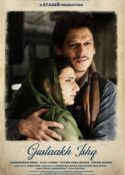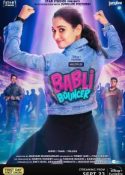 To celebrate Lagaan, which released 24 years ago today, we present Subhash K Jha’s far-reaching interview with Aamir Khan from 2001 right after the film had wrapped, about working on the epic Lagaan as actor and producer.
To celebrate Lagaan, which released 24 years ago today, we present Subhash K Jha’s far-reaching interview with Aamir Khan from 2001 right after the film had wrapped, about working on the epic Lagaan as actor and producer.
Aamir Khan has always been an adventurer.
It therefore comes as no surprise to anyone that he completed the shooting of his first home production Lagaan in record time. Curiosity about Lagaan in the film trade was intense. Was Lagaan a period film? Was it a historical? Did Aamir Khan ghost-direct the film on behalf of Ashutosh Gowariker? (Certainly not!) The film’s intense producer-leading-man shed light on his commitment to making a quality product.
While many of your colleagues shy away from film production, you’ve plunged into it fearlessly. What is Jhamu Sughand’s role in the making of Lagaan?
Jhamu Sughand is financing the film. I am the producer. Either the producer has the entire hundred percent of the budget resources, or he obtains the money from other sources. The producer is the person responsible for getting the unit together and making sure the film is made, and then selling and exploiting the film to its optimum level.
Did you really enjoy your role as a film producer?
Yes, I did. Whether I am happy with the product or not, I cannot say until I see the complete film. So far, my director Ashutosh Gowariker and I seem to have done what we set out to achieve.

Did you exercize a tight control over your cast and crew?
I think I did. I was very clear with my entire cast and crew about what I had in mind and what I wanted from them. Most of the people I hired were like-minded and very straightforward in their dealings. So there was no major crisis situation on location where I had to suddenly blast someone or something like that (laughs). None of the usual glitches or tantrums happened.
There was a marriage between two of your British stars in Bhuj, right?
Yes. Actually, we had forty junior artistes, of which twenty came from London. One of the actors, Jamie, had come with his girlfriend. They mentioned to us that they planned to get married in India, following Indian customs, after shooting. One of us suggested that they get married right there in Bhuj. I happily agreed to the marriage in the temple on our sets with elaborate sangeet, mehndi, etc.
If Mrinal Sen heard about this marriage on the sets, he would make a movie on it.
A (laughs)Well, it’s quite an event.
Your leading lady, Gracy Singh, was chosen above several reputed heroines. Did she give the performance required?
Yes. But she was my director Ashutosh’s choice. But I approved of his choice. Actually, a number of girls that Ashutosh screen-tested were very good. Yes, Rani Mukherjee was our first choice. When we were casting, she was the first girl we approached. But she didn’t have dates. We were shooting at a stretch, and that wasn’t possible for her. Ashutosh was looking at a number of new girls. He liked Gracy the best. Even I agreed with him. Her personality suited the role of the innocent village girl. She just came across as the character in front of the camera. Hopefully, audiences would agree with us.
After this film do you see her as a major star?
Yes, hopefully. She’s a very good actress and dancer. Extremely professional. I’m sure she’ll be a welcome addition to the stars in the industry. But let me tell you, I had no hand in the casting for any of the characters.
So was it a coincidence that actors like Akhilendra Mishra and Mukesh Rishi, whom you had worked with in the past, were in this film?
Actually, Mukesh Rishi isn’t in the film. Ten days before the shooting he came to me and said he had some date problems and requested me that I should relieve him from this commitment. I readily agreed. He should have come more in advance. We replaced him with Pradeep Rawat, who played Sultan in Sarfarosh. Ashutosh shortlisted three or four actors for each role. I had told him to first zero in on every actor and then tell me about it. So the casting was almost entirely his lookout.
Considering you take such an active part in the making of films you star in how did you share the filmmaking of Lagaan with Ashutosh Gowariker?
My relationship with every director is formed organically. I share a different rapport with every one of my directors. I get involved as much as a director wants me to be involved. In this case, I was the producer. So, I could demand an interaction which I couldn’t demand as an actor. But Ashutosh and I were friends to begin with. I found him to be so sure about the entire film. The script came from within him, and he was perfectly in tune with the theme. I found myself depending on his judgement for a whole lot of things rather than the other way around. We did argue sometimes. But nothing major. You must remember that we had been discussing and taking decisions about the film long before the shooting actually began.
So how much was your involvement with the making of Lagaan?
I get involved as much as a director wants me to be involved. In this case, I was the producer. So I could demand an interaction which I couldn’t demand as an actor. But Ashutosh and I were friends to begin with. I found him to be so sure about the entire film. The script came from within him, and he was perfectly in tune with the theme. I found myself depending on his judgement for a whole lot of things rather than the other way around.
Has he lived up to your faith?
I think so. I think he’s extremely talented. In Lagaan, he has grown by leaps and bounds since Baazi. I’d love to work with him again.
You’ve tasted blood now. Would you continue to make films?
Yes, I think so. Lagaan was definitely a difficult film to make. We had actors and technicians coming from abroad. I hope the next film will be easier (laughs).
What do you play in Lagaan?
My character’s name is Bhuwan. He’s a simple villager. Yes, I wear a dhoti. I learnt to wear it in just one day. My character is simple but extremely strong-willed. He’s honest and possesses the strength to fight against injustice. He has strong leadership qualities. He mobilizes the whole village to pull off the impossible. But there’s no revolution, mutiny, or rebellion.
Is Lagaan a pathbreaking film?
That’s too grand a word. But there’s certainly no parallel to the kind of film I’ve made in Lagaan. We built a whole village set in Bhuj.
J.P.Dutta tells me the people there were extremely helpful. What was your experience?
Yes, they were extremely helpful. We used a lot of local people to build the set. Though Nitin Desai designed it, we used the local labour force to construct the set. We liked certain local architectural designs in Bhuj. We used them so that our village didn’t look like a set.
Did you leave the village set intact at the end of the shooting?
No, the land that we used belonged to the local people. It was agricultural land. We rented the land for one year and paid them what they would have earned by farming during that one year. We had to give them back the land as we had found it.
It must have been a sad moment for you when your village set was demolished?
I didn’t wait to see that moment. I came away before the set was demolished.
What kind of music has A.R.Rahman given in Lagaan?
As you know, Lataji has sung a Bhajan in the film. It isn’t period music. Quite honestly, I don’t know what kind of music existed in the 1890s. Ashutosh‘s brief to Rahman was that the music should have a period feel, that it shouldn’t be a modern sound. It isn’t modern-sounding music. At the same time, we haven’t restricted ourselves to the specific period. I think he has achieved what we wanted. Initially, I spoke to Rahman. He didn’t know Ashutosh. But after he heard the script and liked it I told Rahman that all further instruction will come from Ashutosh. On two occasions, Rahman came down to Bhuj. Most of the time, Ashutosh and Rahman worked in Chennai. Just before the shooting of a song, Rahman came down to Bhuj to give the final touches. I used to sit quietly in the room and watch Rahman at work. It was really amazing.











